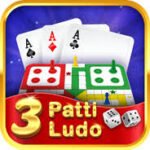Description

The word “spin” is simple, yet it carries a world of interpretations—ranging from physical movement to digital games, and from scientific phenomena to metaphorical life experiences. At its core, spin represents rotation: a circular motion around a central axis. But beyond just mechanics, spin also symbolizes chance, energy, and change. Whether it’s the spin of a coin, the rotation of the Earth, or the excitement of a lucky wheel in a game, spin is everywhere. It represents momentum and unpredictability—two forces that often define both play and life.
In the world of games and entertainment, “spin” takes on a vibrant and dynamic role. Slot machines, lucky wheels, roulette tables, and spin-based games like fidget spinners or spinning tops all center around this concept. The act of spinning—initiated by a tap or a flick—creates suspense and excitement. In many mobile and online games today, daily spins offer users a chance to win coins, prizes, or in-game upgrades. This spinning mechanic plays on psychology, blending hope with randomness, and keeps players coming back for another try. The thrill lies in not knowing where the pointer will stop.
Beyond gaming, spin has significant importance in the world of science and physics. In classical mechanics, spin refers to the rotation of objects—from spinning tops to planetary orbits. In quantum mechanics, however, spin is a fundamental property of particles, like electrons and protons. These particles possess spin as a kind of intrinsic angular momentum, which plays a crucial role in magnetic fields and atomic behavior. While this microscopic version of spin is invisible to the naked eye, it helps power modern technologies such as MRI machines and semiconductors. From children’s toys to advanced physics labs, spin bridges the tangible and the theoretical.
In a more metaphorical sense, “spin” symbolizes perspective and influence. In media and communication, putting a “spin” on a story means presenting it in a specific way to shape public perception. Politicians, marketers, and PR professionals often spin facts to create narratives that align with their goals. This figurative use of the word highlights how motion can also mean manipulation—how the direction of information, much like a spinning wheel, can be controlled. It’s a powerful reminder that spin isn’t always random or innocent; sometimes, it’s deliberately designed.
From a lifestyle and emotional standpoint, spin can also reflect the chaotic pace of modern life. People often say they feel like they’re “spinning in circles” when overwhelmed or caught in endless routines. At the same time, spinning can also feel liberating—like dancing freely or letting go of control. Activities like spinning in a chair, twirling on a dance floor, or even practicing spinning sports like figure skating or cycling allow the body to connect with motion in joyful and expressive ways. The physical experience of spinning brings back a sense of play, balance, and flow.
In conclusion, spin is more than motion—it’s a metaphor for movement, chance, change, and control. It appears in everyday life, in science, in games, and in communication. Spin keeps the wheels of possibility turning, whether you’re playing a mobile game, observing the stars, or navigating the unpredictable turns of life itself. It reminds us that while we can influence the spin, we can’t always control where it stops—and therein lies the excitement. So go ahead, give it a spin—because sometimes, a single rotation can change everything.




